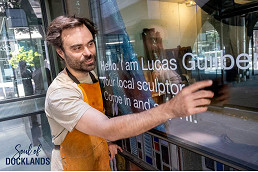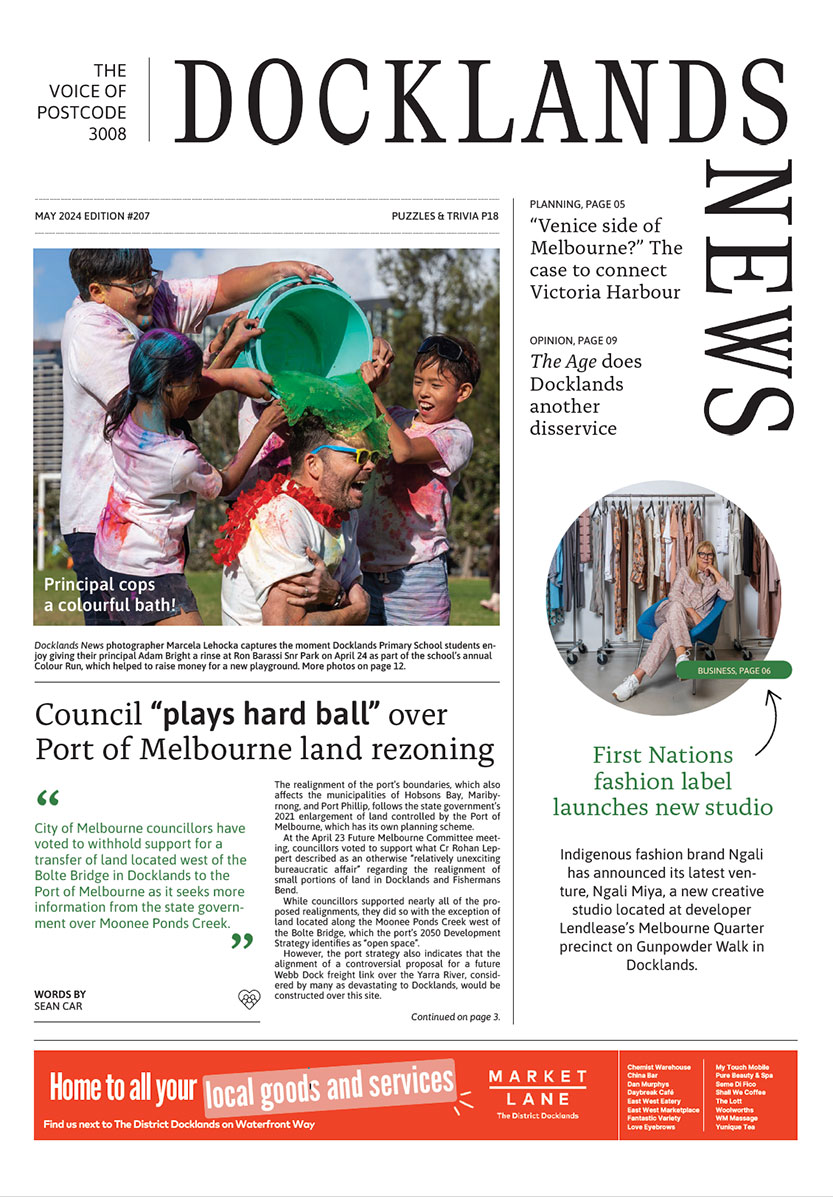Docklands: the “Venice-side” of Melbourne?
Melbourne’s Docklands is frequently exposed to negative rhetoric about its past or present, as well as to futuristic visions about possible futures. But what do locals want Docklands to become? What can we learn from urban ways of life next to waterways?
Docklands today is a mixed-use area with many public facilities for sports, recreation, culture and entertainment. Parks with native vegetation and birds connect to nature, children have access to fun playgrounds, and people of all ages enjoy the sportsgrounds for basketball, cricket, gym, football and other activtities. More than four kilometres of waterfront promenades offer ample opportunities for walks and jogging.
But for many residents some of these attractions are not within easy walking distance. If you live at the western end of New Quay and would like to visit the Library at the Dock the walk takes about 20 minutes, yet a bridge or boat could shorten that to 5 minutes.
If you live at the western end of Bourke St then walking to the Ron Barassi Snr Park sportsgrounds covers two kilometres, despite being located less than 600 metres north. This is not simply a question of efficiency – for many the difference is the threshold for not taking the walk at all.
The main barrier to north-south movement is the water separating NewQuay, Victoria Harbour and Yarra’s Edge. Additional connections between these neighbourhoods could be a most effective way to enable residents’ easier access to community facilities, and to each other.
Water doesn’t have to be segregating. Water edges can be designed to attract streetlife, vibrant as in Amsterdam or Venice, or calmly unfolding like in Copenhagen or Lucerne.
The Docklands Public Realm Plan by Places Victoria (now Development Victoria) and the City of Melbourne shows such potential connections, including between Ron Barassi Snr Park and the Old Shipping Control Tower, as well as three bridges across the river connecting Victoria Harbour to Yarra’s Edge, and beyond to Fishermans Bend.
Yet none of these actualised since the plan was published in 2012. Such new connections would much benefit residents and the local economy, substantially increasing walkability.

Source: Fig.4.07 from Docklands Public Realm Plan
A most common design choice is for bridges with high enough clearance to allow the tallest boat or ship to pass, like Bolte Bridge. But that again makes walking and cycling across more difficult. Alternatives are movable bridges that allow boats to pass when required.
Parts of these structures can be lifted, tilted, or swung. Pyrmont Bridge in Sydney’s Darling Harbour is an example that has become a tourist attraction, swinging 90 degrees even when not required, just for the fun of the spectacle. Chicago has more than 30 movable bridges.
A different approach to connect two shores is by short-distance ferry. Brisbane has such a public transport service, albeit at relatively low half-hour frequency. A public ferry continuously commuting between NewQuay and Victoria Harbour at short intervals could manage the challenge of connecting the two larger parts of Docklands.
Rhetoric about costs may frame this as prohibitively expensive but consider this: some of the poorest settlements across the world have such transport. Why can’t Docklands have better connectivity?
Docklands has been critiqued in the past for its development process that gave away control over public land for private profit. Articles constructing a negative image continue. Yet as time has gone by, the area has grown more diverse and quite different from the visual renderings used for its early marketing in the 1990s.
Turning the focus of public debate to current problems and opportunities may be a good step ahead.
Connecting Docklands’ parts through new links that bring people closer to the water could be a most potent step ahead, harnessing new synergies between residents, businesses, workers, and tourists.
Dr Elek Pafka is a senior lecturer in urban planning and urban design at the Faculty of Architecture, Building and Planning at the University of Melbourne. •

Council “plays hard ball” over Port of Melbourne land rezoning








 Download the Latest Edition
Download the Latest Edition
